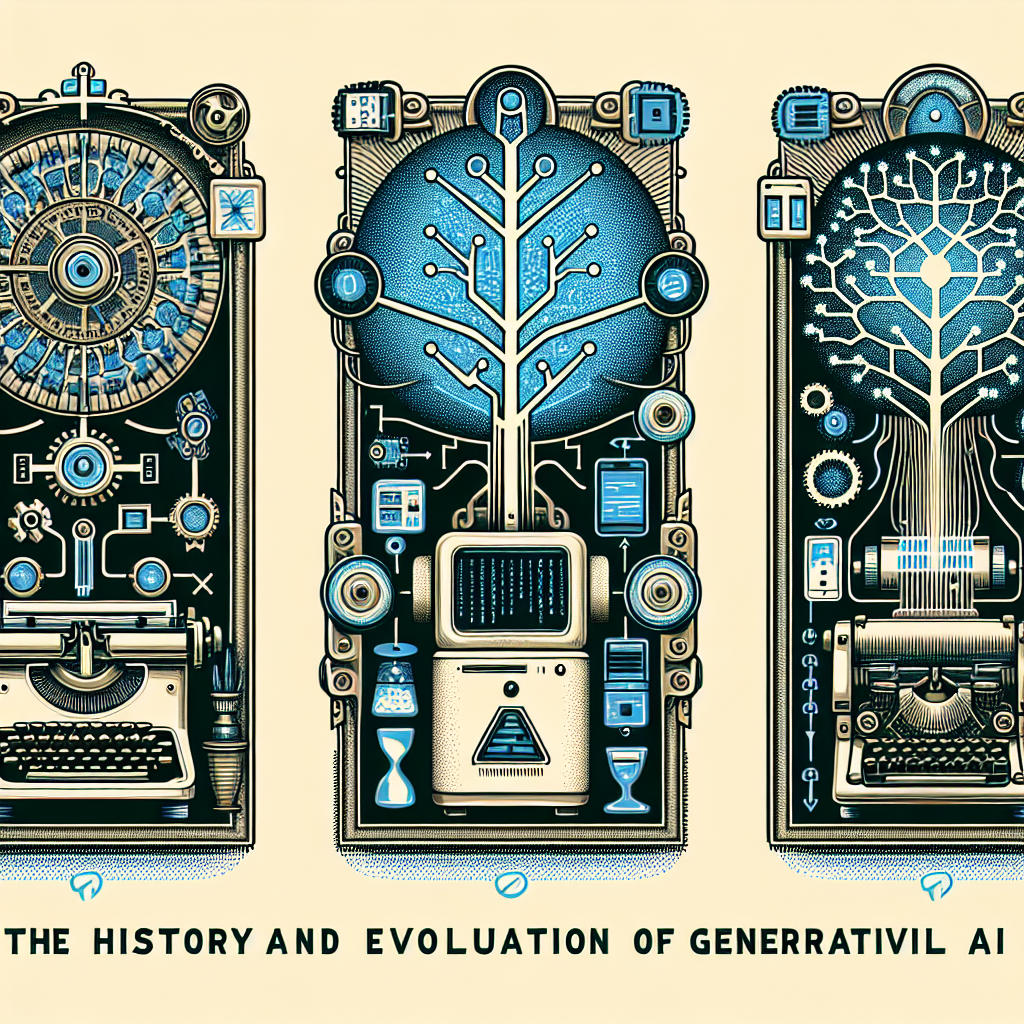The History and Evolution of Generative AI

Generative artificial intelligence (generative AI) has rapidly transformed from a theoretical concept to a practical technology that impacts various industries. This blog post delves into the history, key developments, and diverse applications of generative AI, shedding light on its journey from inception to public adoption.
Early Foundations and Milestones
1950s – 1970s: The Dawn of AI and Early Models
-
1952: Arthur Samuel developed the first machine learning algorithm for playing checkers, coining the term “machine learning.”
-
1957: Frank Rosenblatt created the Perceptron, the first neural network capable of being trained, although it was limited by its single-layer design.
-
1961: Joseph Weizenbaum introduced ELIZA, an early chatbot that could engage in simple natural language conversations, marking one of the first instances of generative AI.
-
1975: Kunihiko Fukushima developed the Cognitron, the first functional multilayered artificial neural network, laying the groundwork for deep learning.
1980s – 1990s: Advancements and AI Winters
-
1982: John Hopfield’s Hopfield net introduced a new form of neural network that mimicked human memory retrieval.
-
1986: David Rumelhart’s team popularized backpropagation for training neural networks.
-
1997: Juergen Schmidhuber and Sepp Hochreiter developed Long Short-Term Memory (LSTM) networks, crucial for tasks requiring long-term memory, such as speech recognition.
-
Late 1990s: The development of powerful GPUs by companies like Nvidia significantly boosted the computational capabilities needed for training complex neural networks.
2000s: Resurgence and Integration
-
2004-2006: The Face Recognition Grand Challenge spurred advancements in facial recognition technology.
-
2011: Siri, the first widely used virtual assistant, was launched, demonstrating practical applications of AI in consumer technology.
The Rise of Generative AI
2014: A Breakthrough with GANs
-
Ian Goodfellow introduced Generative Adversarial Networks (GANs), which use two neural networks (a generator and a discriminator) to create realistic images, videos, and audio. GANs marked a significant leap in the capability of generative AI.
2017: The Transformer Revolution
-
The Transformer model, introduced by Vaswani et al., enabled more effective processing of sequential data, leading to significant advancements in natural language processing and generation.
2018-2020: GPT and Large Language Models
-
2018: OpenAI released GPT-1, the first Generative Pre-trained Transformer, capable of generating coherent text.
-
2019: GPT-2 demonstrated remarkable abilities in text generation, sparking widespread interest and debate about the potential and risks of AI-generated content.
-
2020: GPT-3, with 175 billion parameters, set new benchmarks in generating human-like text, capable of completing a wide array of tasks with minimal prompting.
Public Adoption and Diverse Applications
2021-Present: Explosion of Generative AI Tools
-
2021: The release of DALL-E, a transformer-based model capable of generating images from textual descriptions, and subsequent models like Midjourney and Stable Diffusion, brought generative AI to the art and design communities.
-
2022: OpenAI’s ChatGPT, based on GPT-3, became publicly available, showcasing advanced conversational capabilities and sparking mainstream interest in generative AI.
-
2023: GPT-4 and other models like Meta’s ImageBind, which integrates multiple data modalities, continued to push the boundaries of what generative AI can achieve.
Key Applications of Generative AI
Generative AI has found applications across numerous industries:
-
Software Development: Tools like GitHub Copilot assist developers by generating code snippets and offering suggestions.
-
Healthcare: AI models help in drug discovery and predicting protein structures.
-
Entertainment and Media: AI-generated art, music, and video content enhance creative processes.
-
Customer Service: Chatbots and virtual assistants improve customer engagement and support.
-
Fashion and Product Design: AI-driven designs and prototypes accelerate the development of new products.
Ethical and Regulatory Considerations
The rapid advancement of generative AI also raises important ethical and regulatory questions. Issues such as the potential misuse of AI for creating deepfakes, the impact on employment, and the use of copyrighted material in training datasets are at the forefront of ongoing debates. Regulatory bodies worldwide are working to address these challenges, with measures like watermarking AI-generated content and ensuring transparency in AI operations.
Conclusion
From its early conceptualization to its current applications, generative AI has come a long way. It stands as a testament to the incredible advancements in machine learning and deep learning. As we continue to explore its potential, it is crucial to balance innovation with ethical considerations, ensuring that generative AI benefits society as a whole.
Generative AI is not just a technological marvel; it is a transformative force that reshapes how we create, interact, and perceive the digital world. Its journey is a fascinating blend of scientific ingenuity, creative exploration, and thoughtful regulation.
References






